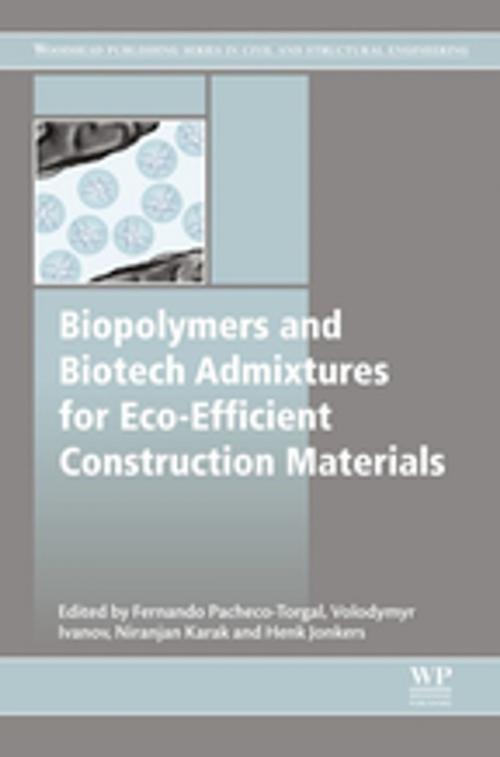Biopolymers and Biotech Admixtures for Eco-Efficient Construction Materials
Nonfiction, Science & Nature, Technology, Material Science, Engineering, Civil| Author: | ISBN: | 9780081002094 | |
| Publisher: | Elsevier Science | Publication: | January 11, 2016 |
| Imprint: | Woodhead Publishing | Language: | English |
| Author: | |
| ISBN: | 9780081002094 |
| Publisher: | Elsevier Science |
| Publication: | January 11, 2016 |
| Imprint: | Woodhead Publishing |
| Language: | English |
Since 1930 more than 100,000 new chemical compounds have been developed and insufficient information exists on the health assessment of 95 percent of these chemicals in which a relevant percentage are used in construction products. For instance Portland cement concrete, the most used material on the Planet (10.000 million tons/year that in the next 40 years will increase around 100 %) currently used in around 15% of total concrete production contains chemicals used to modify their properties, either in the fresh or hardened state.
Biopolymers are materials that are developed from natural resources. They reduce dependence on fossil fuels and reduce carbon dioxide emissions. There is a worldwide demand to replace petroleum-based materials with renewable resources.
Currently bio-admixtures represent just a small fraction of the chemical admixtures market (around 20%) but with environmental awareness for constituents in construction materials generally growing (the Construction Products Regulation is being enforced in Europe since 2013), the trend towards bio-admixtures is expected to continue.
This book provides an updated state-of-the-art review on biopolymers and their influence and use as admixtures in the development of eco-efficient construction materials.
- Provides essential knowledge for researchers and producers working on the development of biopolymer-modified construction materials
- Discusses the various types of biopolymers currently available, their different production techniques, their use as bio-admixtures in concretes and mortars and applications in other areas of civil engineering such as soil stability, wood preservation, adhesives and coatings
- All contributions are made from leading researchers, who have intensive involvement in the design and use of biopolymers in construction materials
Since 1930 more than 100,000 new chemical compounds have been developed and insufficient information exists on the health assessment of 95 percent of these chemicals in which a relevant percentage are used in construction products. For instance Portland cement concrete, the most used material on the Planet (10.000 million tons/year that in the next 40 years will increase around 100 %) currently used in around 15% of total concrete production contains chemicals used to modify their properties, either in the fresh or hardened state.
Biopolymers are materials that are developed from natural resources. They reduce dependence on fossil fuels and reduce carbon dioxide emissions. There is a worldwide demand to replace petroleum-based materials with renewable resources.
Currently bio-admixtures represent just a small fraction of the chemical admixtures market (around 20%) but with environmental awareness for constituents in construction materials generally growing (the Construction Products Regulation is being enforced in Europe since 2013), the trend towards bio-admixtures is expected to continue.
This book provides an updated state-of-the-art review on biopolymers and their influence and use as admixtures in the development of eco-efficient construction materials.
- Provides essential knowledge for researchers and producers working on the development of biopolymer-modified construction materials
- Discusses the various types of biopolymers currently available, their different production techniques, their use as bio-admixtures in concretes and mortars and applications in other areas of civil engineering such as soil stability, wood preservation, adhesives and coatings
- All contributions are made from leading researchers, who have intensive involvement in the design and use of biopolymers in construction materials















